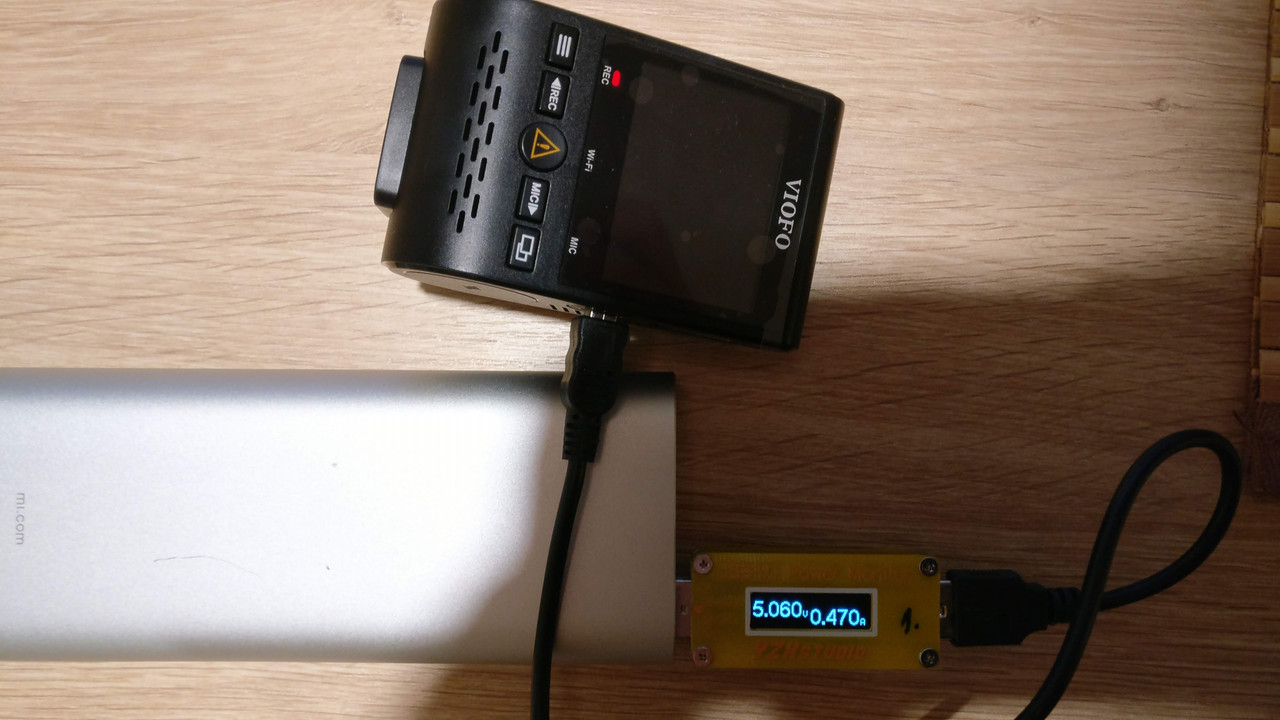There is almost no way to compare Thinkware F800 to A129, they are on two different levels. Thinkware F800 has onboard memory for true video buffering, F800 requires 12volts to camera not possible to run from Power Bank, F800 is 2 to 3 times the retail price offering superior WiFi APP and features, functions and options.
If I was shopping for best Parking Mode protection I'd never select any DVR unless it had 2-5 second buffered video. Your earlier statement about Auto insurance evidence is correct, unless it shows the actual impact it's not enough. I was very surprised when VIOFO created the A129 without buffered video. It doesn't matter what they do with Parking Mode Hardwire Kits since it will always miss the first 2 seconds of event unless you leave continuous time lapse running which drains the battery faster and reducing protection time, low bitrate for reduced power still uses more power since to compensate for no buffering you must run continuous time lapse recording all night.
I'd always prefer 5 second buffered recording to allow Parking Mode low-power state to wake on motion or impact event then save clip starting 5 seconds before event exactly the same as any security camera.
Very few Dashcams in 2018 offer true buffered Parking Mode recording :
Thinkware F800 Pro = $390
BlackVue DR900S 2CH = $450
BlackVue DR750S 2CH = $400
BlackVue DR490L 2CH = $190
Lukas LK-7950 = $250
I am afraid that even the timelaps might not be enough for the insurance company. You can see the car coming towards your car and than going away. No shaking of your car or any sound. Am I right?
F800 Pro:
- When using the Energy Saving Mode, the camera is in sleep mode and only the g-sensor can wake it up. No motion detection because only the g-sensor is active during sleeping.
- When using the Energy Saving Mode and the g-sensor wake the camera up, the camera consequently starts recording but it is not buffered. If you want to use the buffering, it must not be in the sleeping mode.
- I considered using low bitrate when parking for couple of days (max 2 or 3 - depending on the card capacity).
- When parking for more days, I planned to use timelaps + g-sensor/motion detection simultaniously. So there should be the timelaps video + buffered video when there is an impact or motion detected. But a guy in F800 Pro thread told me it is not possible with the camera. They said there was only the timelaps video but no normal video.
- When parking even longer (for week or longer) I would use only Energy saving mode (no buffering). So I cannot use this as an evidence for insurance company because it is not buffered. And some car damages might not be recorded because there might be no motion or impact detected. Like the scratches from people or slight bumps. That's the reason I would use the timelaps or low bitrate whenever it is possible.
- Because I will switch between the parking modes, it is a bit inconvinient for me to go to the mobile app each time and change the settings. A129 with its display would be easier I think.
A129 Duo:
What is the real advantage of F800 Pro in comparison to A129? The Energy Saving Mode is not buffered so I would use it only for very long time parking where I need to save battery energy. G-sensor/motion detection is not possible to use simultaniously with timelaps and there might be a car damage which won't trigger the recording so I would always prefer the low bitrate (when card capacity is sufficient) or timelaps (when card capacity is insufficient). So when parking short time (max 2 or 3 days) I will use low bitrate (best option). When parking for couple of days (maybe a week), I use timelaps. When parking for longer time (couple of weeks), I can use Energy Saving Mode. The conclusion is that I can see only one advantage of F800 Pro in comparison with A129: the energy saving mode. Am I right? What would be your strategy when parking? Would you prefer the g-sensor and motion detection than the low bitrate or timelaps parking mode?
BlackVue DR900S 2CH - front camera - best video quality, rear camera - terrible night vision
BlackVue DR750S 2CH - front camera - slightly worse video quality than A129 but still acceptable, rear camera - very grainy in night vision (I think it is not acceptable for me)
BlackVue DR490L 2CH - I suppose the video quality is equal or worse then the more expensive models
Lukas LK-7950 - I don't know this camera. I saw a video on youtube and I love the summary screen when you switch it on. But I have no idea about the video quality, bitrates and power consumption. I couldn't find any video quality comparison to BlackVue or Viofo or Thinkware. Is there any?


